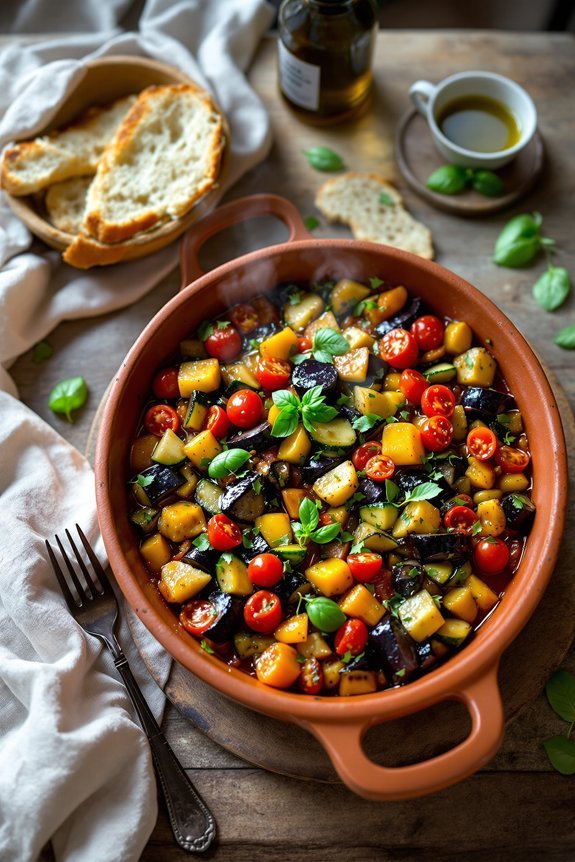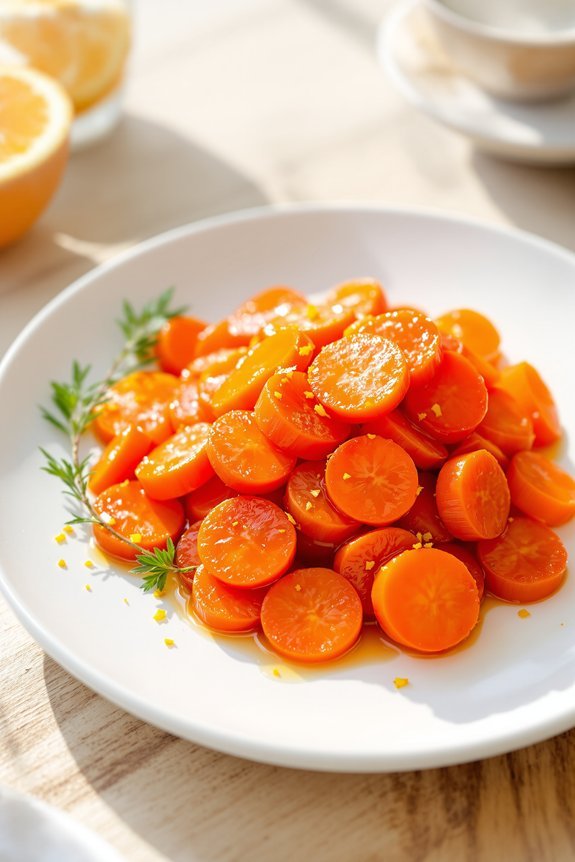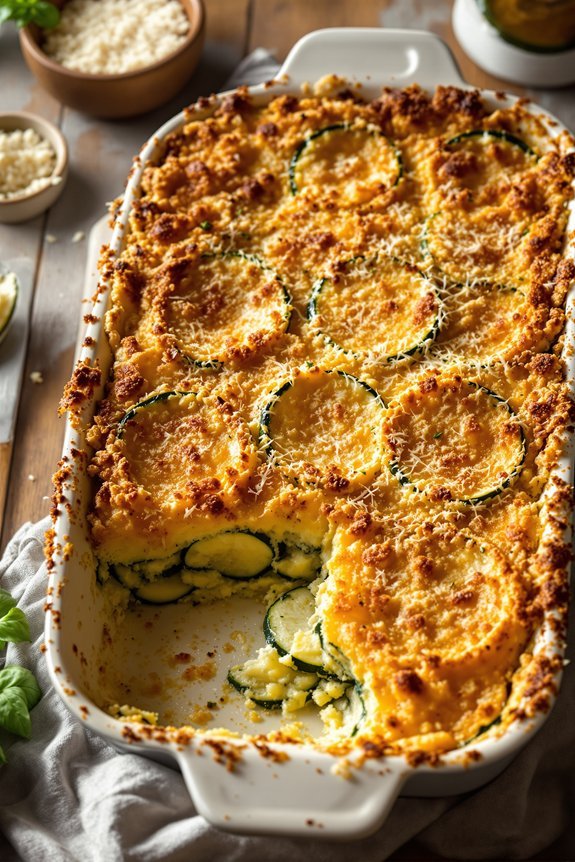Why You’ll Love this French Ratatouille
Whether you’re a seasoned chef or a beginner in the kitchen, this classic French Ratatouille will quickly become one of your go-to recipes. I’m telling you, there’s something magical about how these simple vegetables transform into something extraordinary.
The combination of eggplant, zucchini, peppers, and tomatoes creates a perfect harmony of flavors. Can you imagine anything more satisfying than tender vegetables simmered in aromatic herbs? And it’s versatile too—serve it hot as a main dish or chilled as a side.
Best of all, it’s naturally healthy without trying to be. Rustic, unfussy cooking at its finest.
What Ingredients are in French Ratatouille?
French Ratatouille is a celebration of Mediterranean vegetables in their prime. The beauty of this dish lies in its simplicity—each vegetable contributes its unique flavor while melding into a harmonious whole.
What makes ratatouille special isn’t fancy ingredients or complicated techniques, but rather the way humble garden vegetables transform when cooked slowly together.
- 1 large eggplant
- 3 medium zucchini
- 2 large green peppers
- 1 cup chopped onion
- 2 teaspoons finely minced garlic
- 2 cups crushed canned tomatoes
- 1 teaspoon dried oregano
- 1 tablespoon fresh basil (or 2 teaspoons dried)
- 2 teaspoons chopped parsley
- Olive oil (for sautéing)
- Freshly ground black pepper
- Salt (to taste)
The quality of your vegetables really matters here. Try to find the freshest eggplant, zucchini and peppers you can—farmers markets are perfect for this.
And don’t skimp on the herbs! While dried herbs work perfectly fine (especially in winter), fresh basil and parsley add a brightness that elevates the entire dish.
Some cooks might add additional ingredients like bay leaves or thyme, or even a splash of red wine vinegar at the end for tang, but this classic version lets the vegetables truly shine.
How to Make this French Ratatouille

Making ratatouille is less about technique and more about patience—letting those garden-fresh vegetables slowly meld together into something magical. Start by heating some olive oil in a Dutch oven or large saucepan. Add 2 teaspoons of finely minced garlic and 1 cup of chopped onion, cooking them until they’re tender and fragrant. There’s something so comforting about that initial aroma of garlic and onions cooking, isn’t there? It’s like the universal signal that something good is happening in the kitchen.
Next comes the prep work for your vegetables. Cut 1 large eggplant, 3 medium zucchini, and 2 large green peppers into roughly 1-inch pieces. Don’t stress about making them perfectly uniform—ratatouille is rustic by nature.
Add these colorful chunks to your pot along with 1 teaspoon dried oregano, 1 tablespoon fresh basil (or 2 teaspoons dried), and 2 teaspoons chopped parsley. Give everything a good stir to coat the vegetables with oil and herbs, then sauté for about 5 minutes. This brief cooking period helps the vegetables start releasing their flavors and gets them acquainted with one another.
The final step is where the magic happens. Pour in 2 cups of crushed canned tomatoes, season with freshly ground pepper and a pinch of salt, then cover and let everything simmer over low heat for about 45 minutes. During this time, the vegetables will soften and exchange flavors, creating that distinctive ratatouille taste.
You can serve this beautiful medley hot as a main dish with crusty bread, or chill it in the refrigerator to enjoy later. Ratatouille actually improves with time as the flavors continue to develop, making it a perfect make-ahead dish for busy cooks who appreciate good food without the fuss.
French Ratatouille Substitutions and Variations
Although traditional French ratatouille calls for specific Mediterranean vegetables, you can easily adapt this versatile dish based on what’s available in your kitchen or local market.
Yellow squash works beautifully in place of zucchini, while bell peppers of any color bring their own unique sweetness. Can’t find eggplant? Try butternut squash for a slightly sweeter version.
I’m particularly fond of adding mushrooms for an earthier flavor profile, or tossing in a handful of olives for that extra Mediterranean punch.
Some cooks even include potatoes or artichoke hearts. The beauty of ratatouille? It welcomes creativity while maintaining its rustic, comforting essence.
What to Serve with French Ratatouille
When served on its own, ratatouille makes a wonderful light meal, but I’ve found that pairing this colorful vegetable medley with complementary dishes elevates it to a complete dining experience.
For a classic French dinner, crusty baguette is non-negotiable—perfect for sopping up those savory juices. Rice or couscous create an excellent base, while grilled chicken or fish provide protein balance.
Want something simpler? A poached egg on top transforms ratatouille into a rustic brunch.
Wine pairing? A crisp rosé from Provence or light-bodied red complements the tomato-rich flavors beautifully. Isn’t it amazing how this humble peasant dish plays so well with others?
Final Thoughts
The beauty of French ratatouille lies in its remarkable simplicity and depth of flavor. This rustic dish transforms humble vegetables into something truly magical, proving that good cooking doesn’t need to be complicated.
I love how ratatouille celebrates seasonal produce at its peak. Each vegetable maintains its integrity while contributing to a harmonious whole.
Isn’t that what great cooking is all about?
Whether served hot alongside crusty bread or chilled as a side dish, ratatouille adapts to your needs. Make a big batch and enjoy it throughout the week—it actually improves with time as the flavors meld together.
A true kitchen classic.







